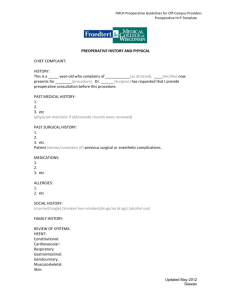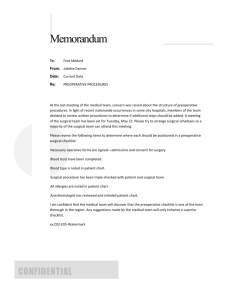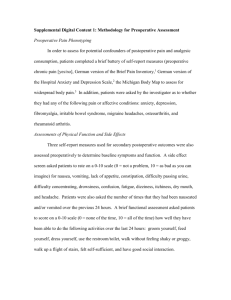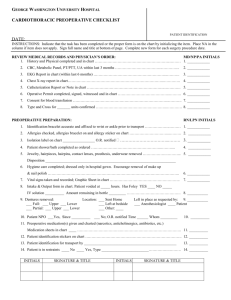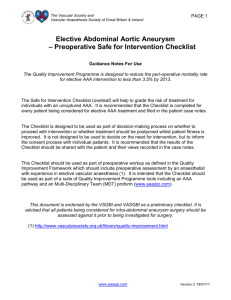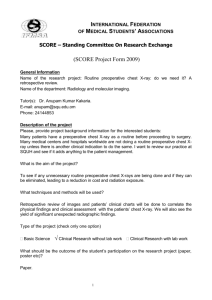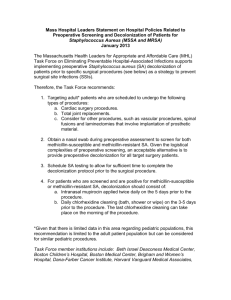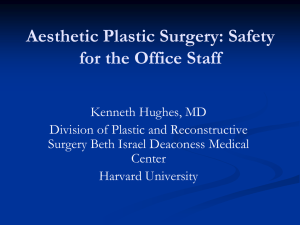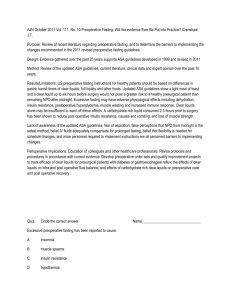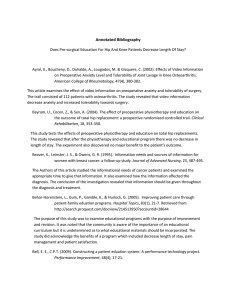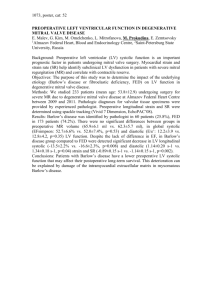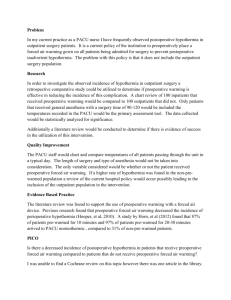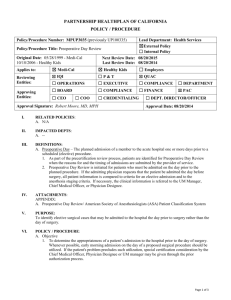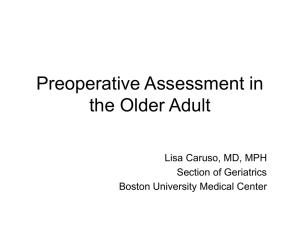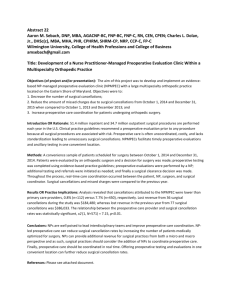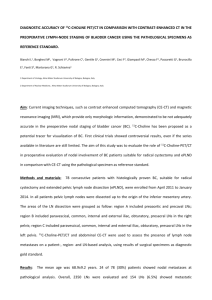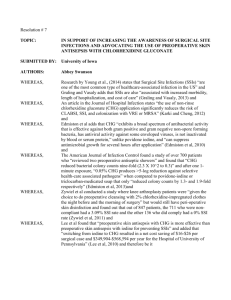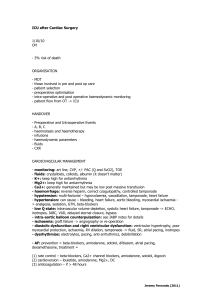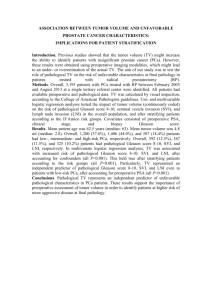Table 1 and Figure 1.
advertisement
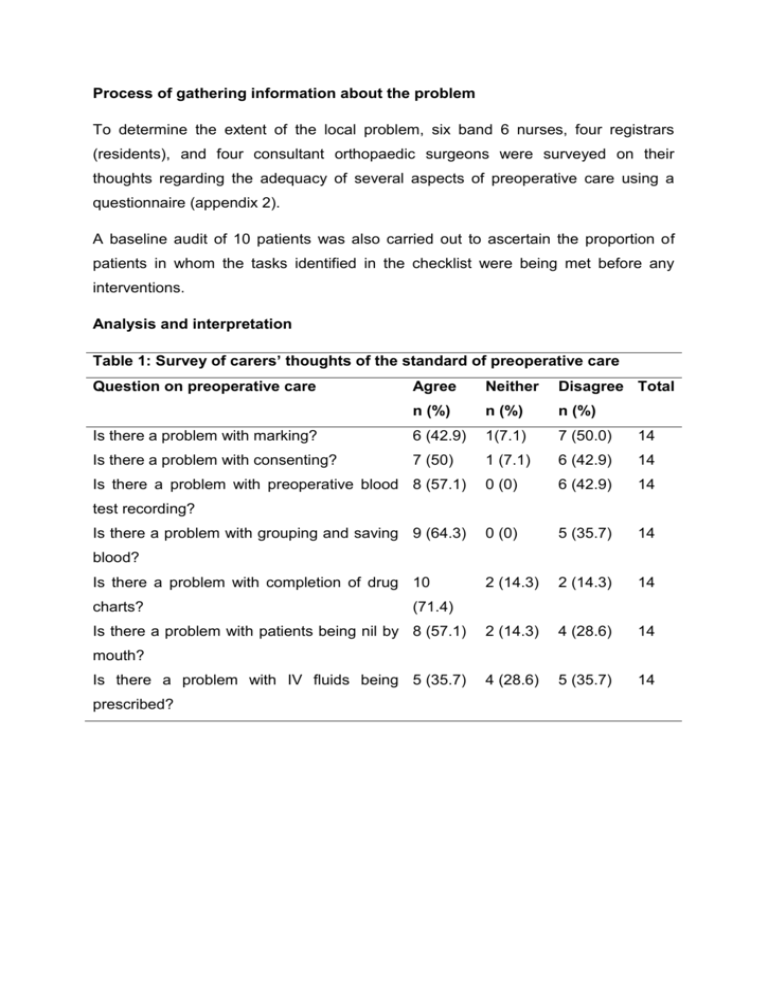
Process of gathering information about the problem To determine the extent of the local problem, six band 6 nurses, four registrars (residents), and four consultant orthopaedic surgeons were surveyed on their thoughts regarding the adequacy of several aspects of preoperative care using a questionnaire (appendix 2). A baseline audit of 10 patients was also carried out to ascertain the proportion of patients in whom the tasks identified in the checklist were being met before any interventions. Analysis and interpretation Table 1: Survey of carers’ thoughts of the standard of preoperative care Question on preoperative care Agree Neither Disagree Total n (%) n (%) n (%) Is there a problem with marking? 6 (42.9) 1(7.1) 7 (50.0) 14 Is there a problem with consenting? 7 (50) 1 (7.1) 6 (42.9) 14 0 (0) 6 (42.9) 14 0 (0) 5 (35.7) 14 2 (14.3) 2 (14.3) 14 2 (14.3) 4 (28.6) 14 4 (28.6) 5 (35.7) 14 Is there a problem with preoperative blood 8 (57.1) test recording? Is there a problem with grouping and saving 9 (64.3) blood? Is there a problem with completion of drug 10 charts? (71.4) Is there a problem with patients being nil by 8 (57.1) mouth? Is there a problem with IV fluids being 5 (35.7) prescribed? Figure 1: Mean proportion of checklist items completed in 10 patients over 4 days. The baseline audit of 10 patients, chosen at random, showed that the mean number of checklist tasks completed was 6.4 (53%) but varied widely from 3 – 10 (25% 83%) (figure 1). The variation suggests that the care being provided by SHOs was not uniform. These results were concordant with the findings of the survey of nurses and consultants, the majority of whom generally agreed that there was a problem with preoperative patient marking, consenting, blood test results recording, grouping and saving of blood, completion of drug charts, and keeping patients nil by mouth (table 1).

